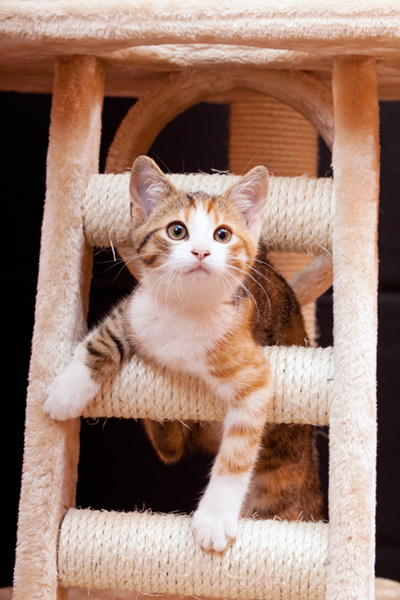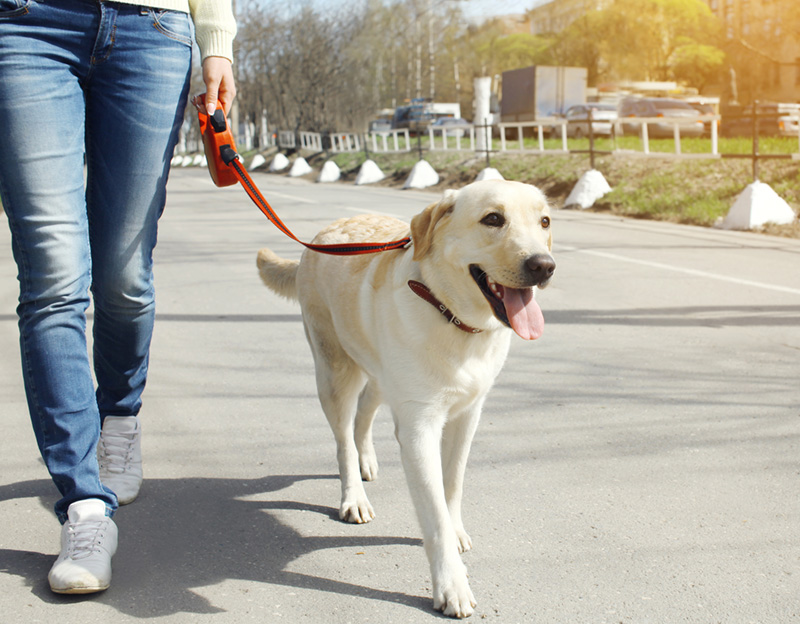Both cats and dogs that are left home alone for extended periods often suffer from separation anxiety and stress. Since April is Stress Awareness month, it’s a good time to highlight the many everyday factors and home situations that can trigger pet stress.
Aa pet's personality plays an important role in how it reacts to different situations, according to animal behaviorist Prof. Nicholas Dodman, head of the small animal behavior clinic at the Cummings School of Veterinary Medicine at Tufts University.
"Some dogs get very destructive and start chewing things around the house," says Dodman. "Others make themselves physically ill and vomit, or even pull their hair out. It's really important to be in tune with your pets so that you can pick up on the situation and rectify things as soon as possible."
Typical signs of canine stress
- Destructive behavior, such as chewing furniture and other items in the home
- Excessive barking both inside and outside the home
- Peeing and pooping around the house
- Sudden displays of growling, snarling and even biting family members that your dog is normally affectionate toward
- Physical signs of illness such as vomiting, diarrhea, loss of appetite, skin allergies, excessive licking and pulling out clumps of fur
Typical signs of feline stress
- Hiding for long periods
- Excessive grooming
- Chasing her own tail
- Loss of appetite
- Vomiting and diarrhea
It can be more difficult to pick up on signs of feline stress because some cats are good at hiding their feelings. Also many felines often hide or sleep out of sight as a normal occurrence. Sometimes the escalating level of feline stress is gradual. It's really important to keep tabs on your feline, and also to check with your veterinarian for behavior that seems abnormal.
Key stress triggers for dogs
- Being left home alone for long periods can cause anxiety to build until you return
- A family member leaving the home or passing away
- The arrival of a new baby
- Builders and renovators working inside the home
- Landscape gardeners and any exterior construction or maintenance work
- A visit to the vet
Key stress triggers for cats
- Loud music played constantly - especially heavy metal
- New furniture
- Repairs and maintenance being done around the house
- A barking dog or new pets
- New family members and even visitors
- A change of food or litter type
- A dirty litter box (cats are very clean animals by nature)
- A visit to the vet
Because cats are such stoic creatures, it's really important to ascertain the real cause of any stress and anxiety. Some cats simply don’t get along with other cats in a multi-cat household, and need to have their own space within the household to relax and feel at home.
Illness and abuse are also major causes of feline stress, so be sure that your cat is being treated properly by all members of the household - and also not being terrorized by other pets.
It's also important to note that often neither cats nor dogs are party animals, and the noise and activity of a party or festive occasion is stressful. It's a good idea to cloister pets in another part of the home, and prevent them from trying to bolt and possibly get lost.
How to relieve pet stress
Animal behaviorists believe that garments such as the ThunderShirt can help reduce anxiety levels in cats and dogs. The garment is meant to swaddle the animal, providing it with the type of security and comfort that is known to comfort babies and small children.
Calming collars, which are infused with natural calmatives such as lavender, are also stress relievers. So are pheromone sprays, which mimic the pheromones that both dogs and cats give off naturally to ease anxiety in their young.
Tips for reducing stress in dogs
When it comes to dogs, daily exercise helps a lot as a stress reliever - much like it does in people. Try to establish a daily exercise routine for your dog. If you have to relocate to a new home, it's important to establish that routine as quickly as possible to ease your canine into its new living situation.

Dogs also have a denning instinct. Crate-training your pooch will offer it a safe place to hang out. Be sure the animal has a nice cuddly blanket and her favorite toys inside to help make the space as comfortable as possible.
Tips for reducing stress in cats
Try to prepare your feline for any major changes in a household, such as a new baby or additional pet. It's essential that cats have their own space and privacy within a home to escape normal household activities, particularly if there are young children.
A good idea is to increase the vertical space in your home with a nice tall cat tree or kitty condo. Both vertical and horizontal scratchers made from corrugated cardboard are also a great feline stress reliever.
Engage your cat in regular playtime, and give her puzzle feeders and distraction toys to play with to keep her busy, especially when she is home alone. Dogs love distraction toys and puzzles, too, as they are a great way to offer both mental and physical enrichment.
Related:
from Zillow Porchlight | Real Estate News, Advice and Inspiration http://www.zillow.com/blog/reducing-pet-stress-194719/
via Reveeo
No comments:
Post a Comment